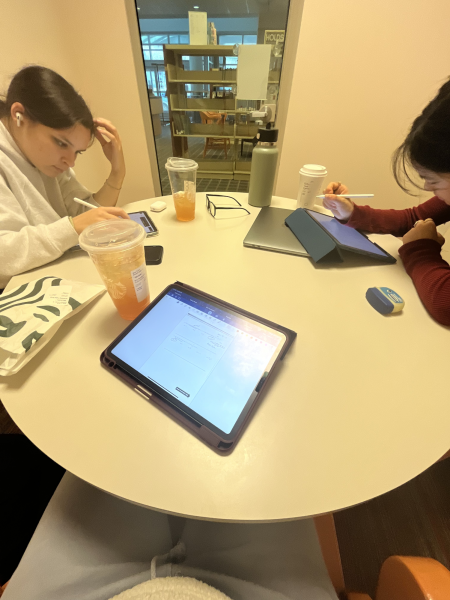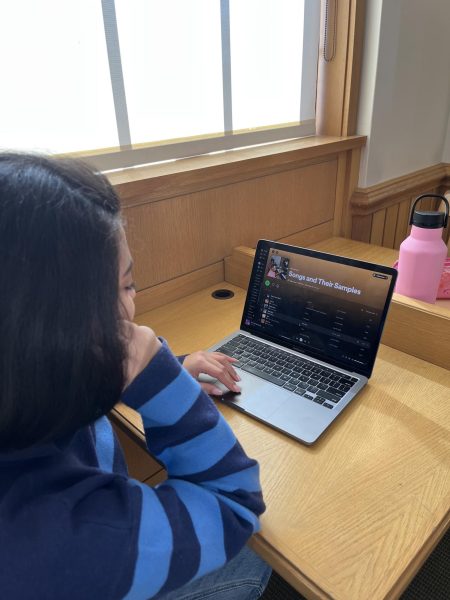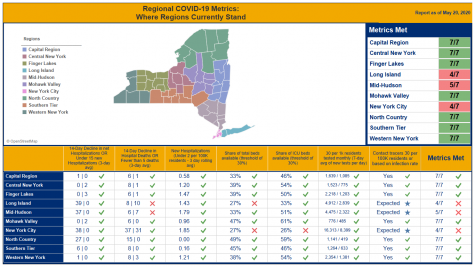Hackley’s Sex-Ed Program Must Be Improved
School should update curriculum to properly prepare students
Credit: Georgia Panitz
Students ask questions about sex education in their Health classes.
The United States has higher teen pregnancy rates and STD preva- lence than any western european country. The nation is experiencing an epidemic of sexual assault amongst young people; some statistics estimate that as many as one in five women in college will experience some form of sexual assault. In light of these very serious concerns, it is clear that it should be a priority for Hackley to provide its students with a rigorous and comprehensive education on sex and relationships.
Fortunately for the school, there is ample data with which to make an informed decision about what kind of sex and relationship education works. The United Nations Population Fund, a U.N. agency dedicated specifically to issues of population, health, and family planning, recently concluded that “several reviews of the literature show that about two-thirds of rigorously evaluated comprehensive sex education programs lead to reductions in…sexual [risk behaviors].”
The organization went as far to conclude that at least some “evaluation studies demonstrate not only self-reported behavior change, but also actual reductions in the rates of unintended pregnancy or sexually transmitted infections.” To achieve these tremendously positive results, it says, students need “accurate and comprehensive information on … relationships with family and peers, as well as romantic and long-term relationships, … communication and decision-making skills, including for refusing un-wanted sex, for negotiating and correctly using male and female condoms/contraception, and for seeking guidance and support from parents, as well as regarding substance abuse and sexual risk, [and] sexual health, especially STIs/HIV and AIDS, unintended pregnancy, condoms and contraception, as well as, information on how to access health and other support services.”
To achieve the best outcomes — namely, a lack of STIs, pregnancies, and relationship violence — Hack- ley must follow these and other research-backed best practices. In short, students must be told explicitly how to communicate effectively in a relationship, stand up for their own personal rights, and, yes, how to obtain and use effective contraception and birth control.
Unfortunately, Hackley currently does not offer this explicit, and comprehensive education. Its program is by no means abstinence only, and contains many positives. The program is based in science, and, in the words of wellness director Charles Colten, has the goal of “equipping students with the information they need to make good decisions.” The course has no want for this “information”; the curriculum is laden with the specifics of different STI’s, descriptions of healthy and unhealthy relationships, and how birth control works. This information is all valuable, and should continue to be offered.
What the program doesn’t offer, however, is concrete words on how safe sex can be practiced, what students should do and who they should talk to in an unhealthy relationship, or how to deal with an unexpected pregnancy. In the words of health teacher Cassandra Hatcher, “I give students the what on safe sex, but not the how.” What safe sex is fair game, but how to use and obtain contraception and birth control is not covered; likewise, relationship health is covered, but specific resources for students to use in real situations are not heavily covered. While discussing the specifics of sex or contraception and birth control may be uncomfortable, they are necessary and need to be added to the curriculum. This information on unintended pregnancy, contraception use, and access to support services are specifically mentioned as crucial components of comprehensive sex education in the U.N. report.
Hackley may have trouble adding these topics for the curriculum not because of their controversy but for the simple reason that their aren’t enough hours in the day. According to Ms. Hatcher, most public high school students in New York will receive around 90 classes of health education, while Hackley students receive around 45. Adding crucial, necessary topics in sexual education might not be easy given this time constraint – but because these topics are so crucial, Hackley needs to find a way. Given that the curriculum doesn’t need a total revamp, adding skills-based instruction in safe sex and relationship health should take no more than five or six classes. Surely Hackley can either add a week’s worth of classes to the current health program.
Fortunately absence of integral information on sexual health seems to be more of an oversight than any deliberate policy choice. “There is certainly no ‘policy’ of abstinence only education or anything like it that I am aware of,” said Upper School Director Andy King. In fact, the school administration seems very amenable to this necessary curriculum change — Mr. King and Mr. Colten both said that, just like any course at Hackley, the course is constantly being reviewed and is open to change. This policy of a dynamic curriculum is smart; now the school must follow through on it and swiftly make the evidence-backed changes to its health education program, namely, teaching kids how to practice safe sex, and ensuring they can access support services.












